Dark Souls III review: A newcomer faces the challenge on Xbox One
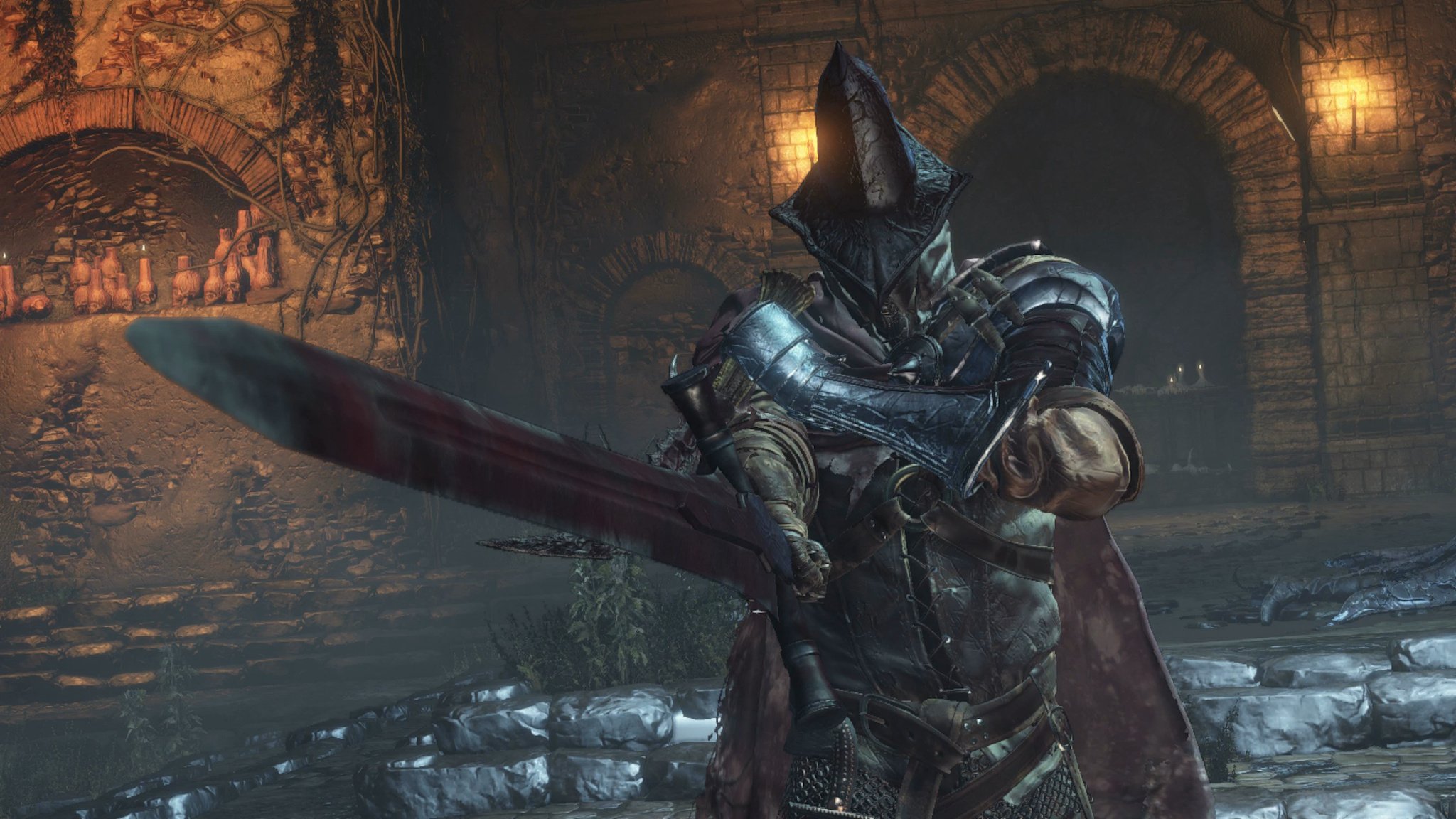

Bandai Namco and From Software's Dark Souls series of action-RPGs has a reputation for being some of the toughest games around. All the talk of difficulty can be scary for new players like me. Still, I've faced my fears and devoted the last few weeks to Dark Souls III on Xbox One. Read on for our detailed review!
Return to Lothric
Dark Souls III marks the return of Dark Souls and Bloodborne director Hidetaka Miyazaki, who produced but did not directly oversee Dark Souls II. This third game is also the culmination of the series, with the dark fantasy kingdom of Lothric finally on the brink of apocalypse. Only an undead warrior known as the Ashen One can stand against the final ruin of Lothric.
The Dark Souls lore is complex and intentionally cryptic. The third game's beautiful cinematic introduction will seem inexplicable to newcomers (and even some returning players) upon first viewing. But as you proceed through the game and meet more of the ruined world's NPC inhabitants, some of the context and the overall direction of the narrative become clear. And you can always read our story primer to get a better picture of the history of Lothric leading up to Dark Souls III.
Beginning the dark journey
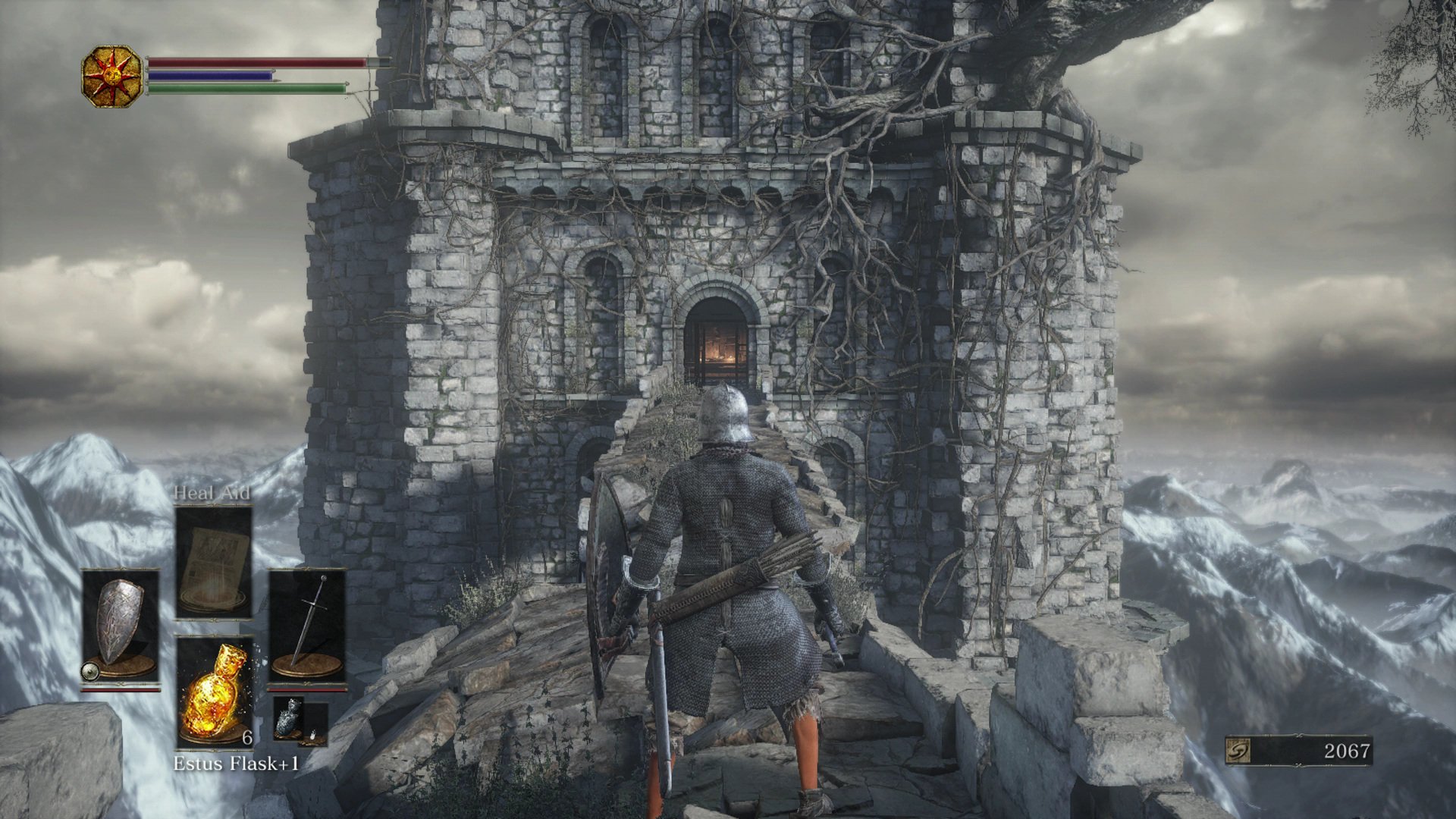
Players begin by creating an Ashen One, customizing his or her appearance, class, and starting relic. The game lets you choose a few different stock skin colors, none of them black. Considering Dark Souls' international appeal, there really should be a black preset. Luckily, you can manually edit the colors to recreate any real-life or fictional skin tone you like.
The choice of classes will affect your starting stats and abilities. For instance, a high strength class like the Knight or Warrior will be able to wield swords and wear equipment that a magic-focused class couldn't equip at the start. But a Sorcerer or Cleric can equip spells right off the bat, giving them a different set of tools with which to face enemies.
Even though deciding on a class at the start can be confusing since you won't know the game yet, don't fret too much over it. The ability to use equipment and spells is all tied to stats like Strength, Dexterity, and Attunement. Like Stranger of Sword City, you get to assign your own stat points when leveling up. So a melee fighter can eventually learn spells and vice versa if that suits your play style and growth path.
Skillful Combat
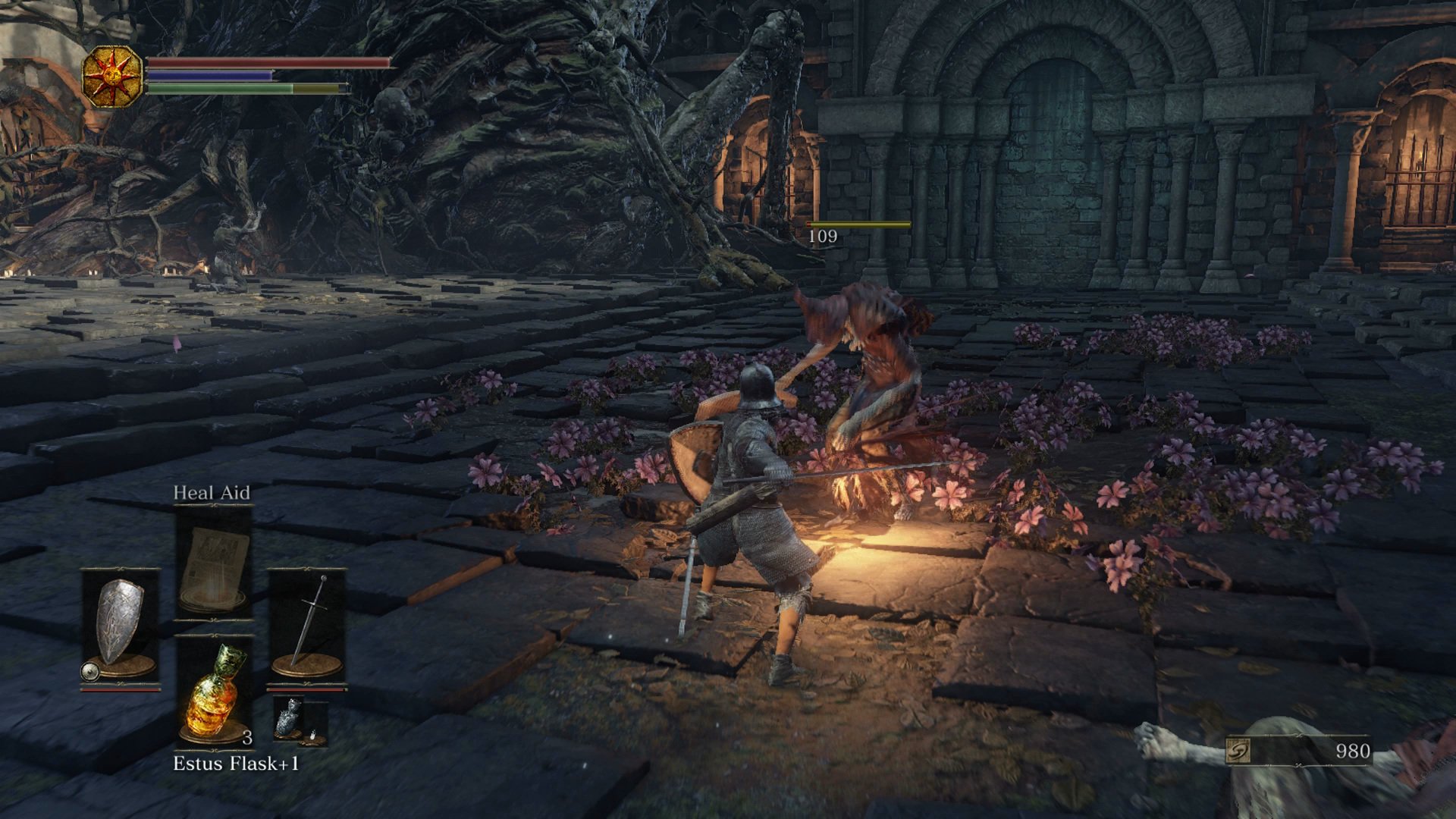
Your Ashen One awakens in a watery graveyard. Scattered messages along the ground impart the basics of combat, something you'll spend the entirety of the game mastering. Dark Souls III's combat truly is deep, but also challenging in a way not seen in many other games.
All the latest news, reviews, and guides for Windows and Xbox diehards.
You can swing at enemies with a fast attack and slow one. You also have the choice of switching between one-handed and two-handed weapon wielding on the fly. This grants access to a different set of moves, including weapon-specific abilities new to this entry. But two-handing prevents access to your shield – always a trade-off.
Defense is a primary requirement for success in Dark Souls III. Unlike many other action games, you can't just run up and combo enemies and expect to win. They will always strike back after a few hits (unless stunned or killed), usually initiating a devastating combo of their own. You generally can't take many hits without dying, so you have to play cautiously and avoid becoming overconfident.
Shields can block many enemy attacks, preventing some or all physical or magical damage. Shield use consumes a lot of Stamina, though. Because physical attacks need Stamina as well, you could find yourself unable to attack when blocking too much. Rolling out of the way generally requires less stamina. But the extensive and sometimes difficult to predict arcs of enemy attacks can be tough to safely roll away from – you're never especially safe from harm in Dark Souls.
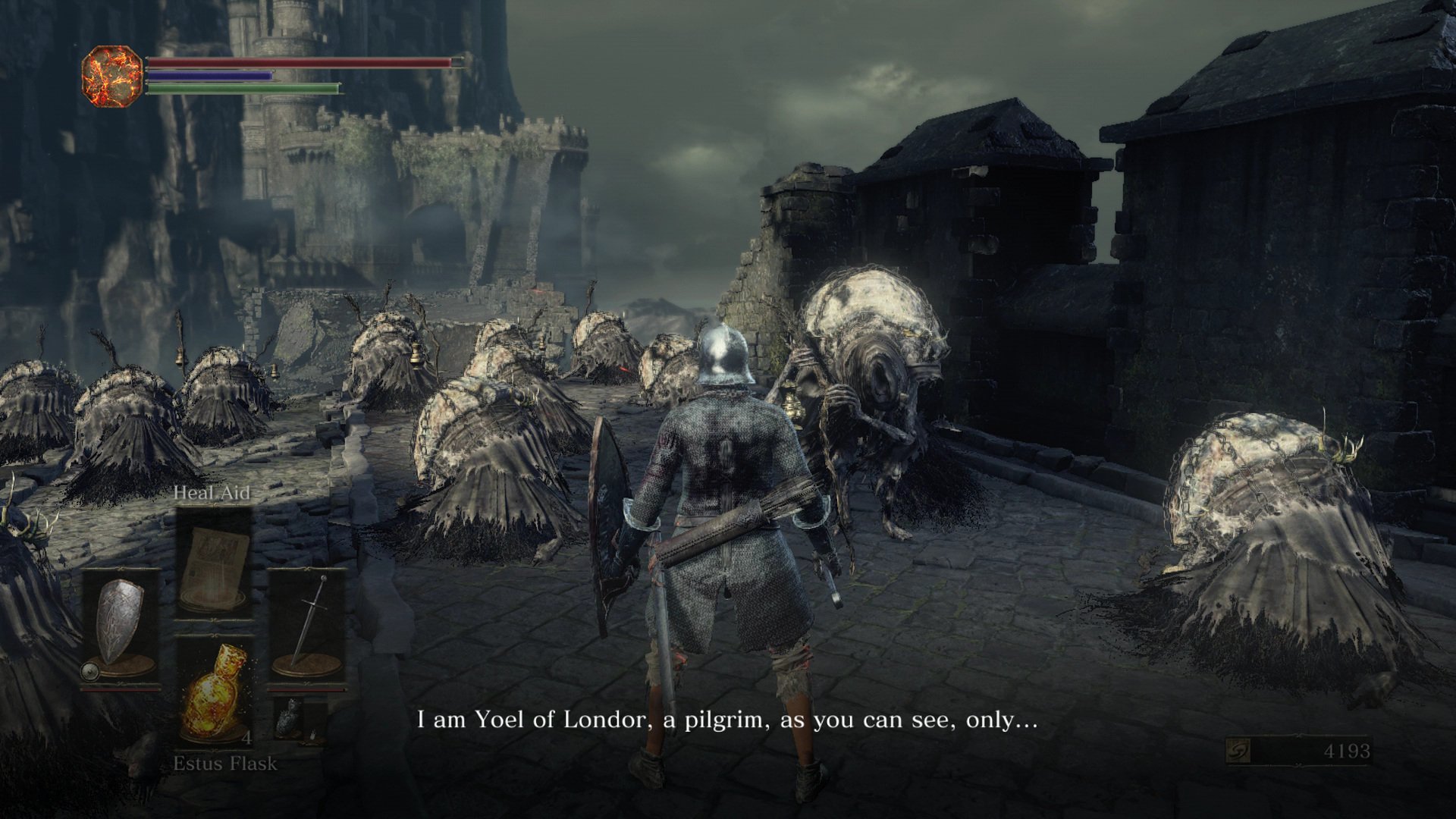
Parrying attacks (hitting the Parry button at just the right time) is also an option for advanced players. A successful parry allows players to launch an extra-powerful counterattack. Watching and learning enemy movement and attack timing to such a great extent would be an annoying requirement for less hardcore players. To Dark Souls III's credit, you can completely ignore parries and still make it through the game.
Certain monsters and predators can still be challenging to face at close range, even after facing them many times. Thankfully ranged bows and crossbows will make many opponents much easier to kill. Arrows can lure enemies away from their brethren, soften them up before they get close enough to fight back, or even kill them from complete safety.
For instance, the dragon perched atop the High Wall of Lothric, the second area, poses an extreme threat at close range. But you can take it down without suffering a single singe by simply standing just beyond the range of its fire breath and bombarding it with a few dozen arrows. A few other minibosses throughout the game can be dealt with in the same way.
Spells presumably work similarly, providing ranged attack options as well as healing and other effects. My character build can't use spells due to their stat requirements, but magic will play a key part in many Ashen One's arsenals.
Death Penalty

A popular view of Dark Souls is that it punishes players for not being good enough. Take too many swings at an enemy or fail to block or dodge after attacking and it might be curtains for you, after all. Dying has always imposed a penalty as well, so it's hard to say Dark Souls doesn't dole out punishment. Then again, every game has some kind of death penalty or other. Without those penalties, death has no meaning and combat has no challenge.
When you die in Dark Souls III, a few things happen:
- You return to the last Bonfire visited.
- Any Souls collected before your death remains on the ground where you died.
- Your maximum health drops forty percent (this penalty does not stack when dying again) and you lose the ability to summon or be summoned by other players.
A key difference from past games is that your Ashen One does not become "Hollow" (inhuman) upon death, thus avoiding some of the penalties associated with Hollow form. The character simply loses Enkindled (also known as Embered) status, the power of the Lord of Cinder. Players can still become Hollow, but it's more of a choice than a consequence this time out.
The health you have after dying is your real maximum health; Enkindlement just provides bonus health for not having died since becoming Enkindled. You can restore that status by either consuming an Ember (an initially rare item that can eventually be bought from a shopkeeper) or defeating any boss.
Although you can get by without the bonus health Enkindlement imparts, it is specifically required to take part in multiplayer, which we'll describe shortly.
Bonfires
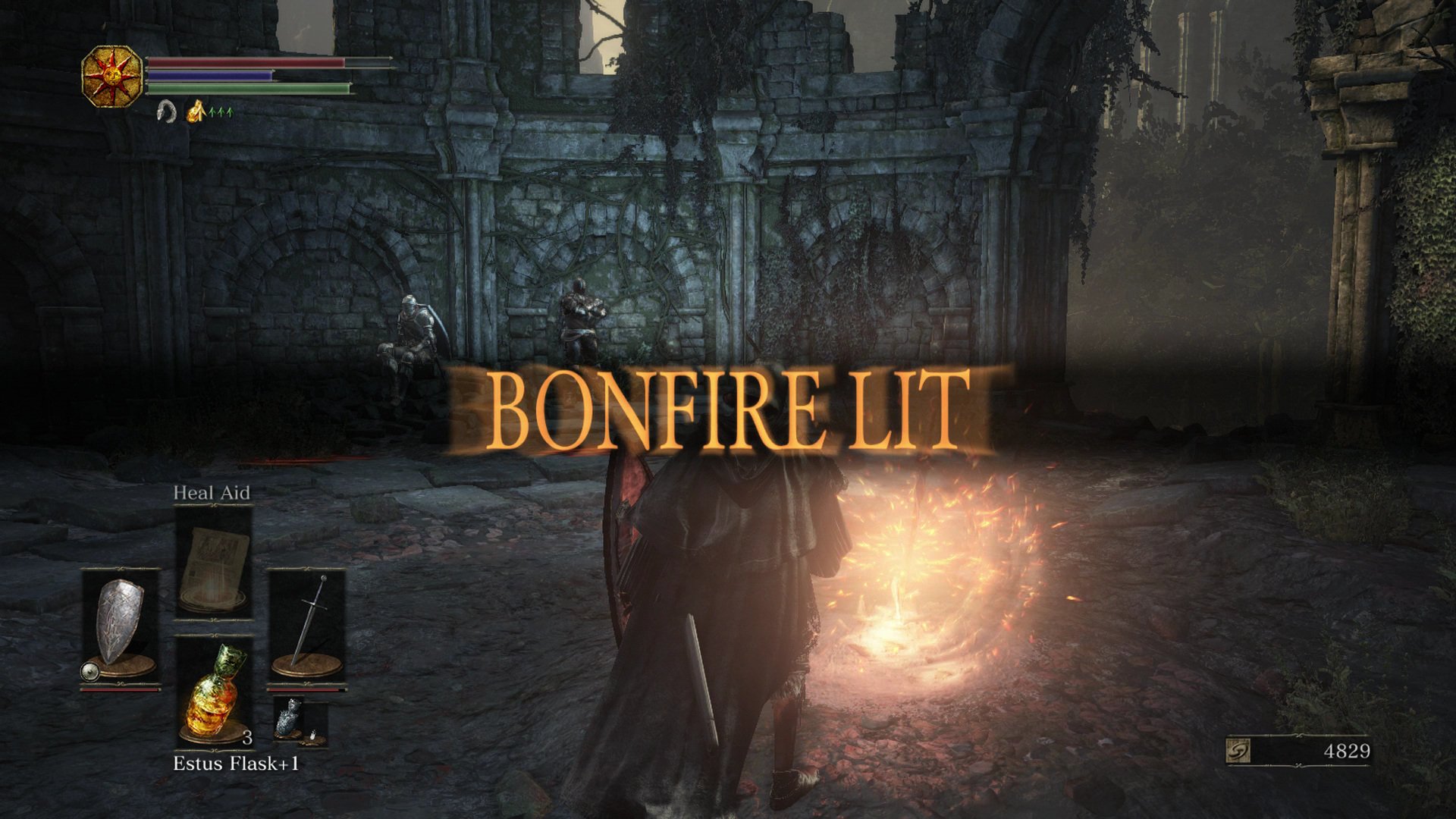
As for Bonfires, they act as checkpoints and fast travel locations. Because you can die more easily than in other games, Bonfires really are a big deal. Finding a new one means that you won't have to retread as much ground (and face the enemies along the way) if and when you get struck down. Resting at Bonfires also replenishes your health and Estus Flasks (items that refill health or magic) and repairs weapons, preventing them from breaking and becoming unusable.
The closer you died to a bonfire, the more likely you'll be able to recover the Souls you dropped as well. Souls obtained from items or killing enemies act as both XP and currency at the Firelink Shrine, the game's hub area. The Firekeeper there can use them to level up your Ashen One, whereas the shopkeepers accept them as payment for equipment, items, and spells.
Souls dropped upon death remain at the site of death until collected or you die again. Should you die again, those Souls disappear forever. Thus dying with a high volume of Souls can be devastating. Still, I'd never call it overly punishing. You just have to be careful during fights, try not to carry too many souls in dangerous areas, and do your best to recover them after death.
Finally, Bonfires allow players to fast travel to any other Bonfire they have reached. Not only can you get around faster that way, but it's also the best way to arrive at the Firelink Shrine to spend your Souls. The fewer souls you carry at one time, the less you have to lose when overcome by assailants.
Multiplayer
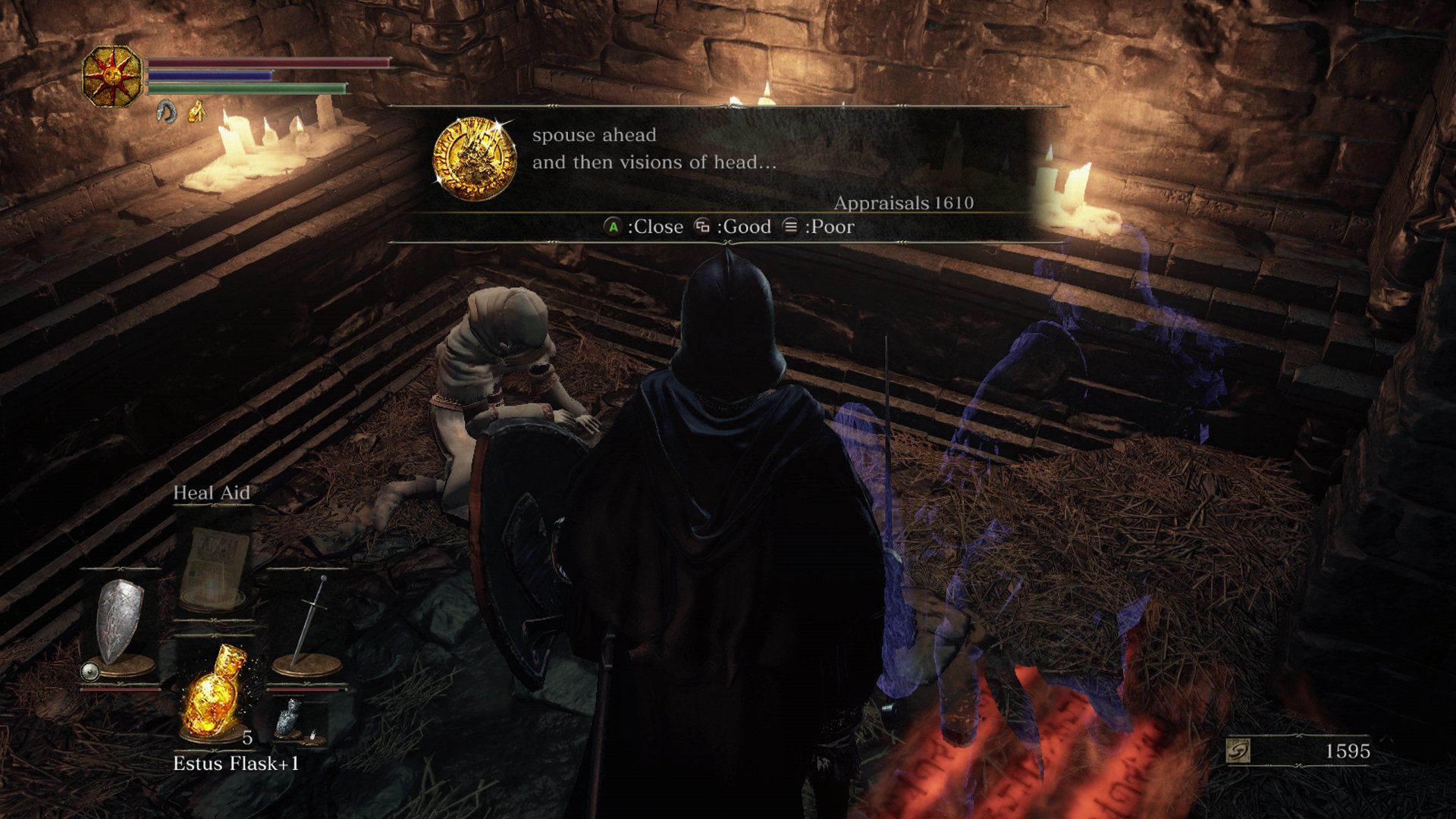
Dark Souls III doesn't have a separate multiplayer mode. Rather, players interact with and meet each other through more unique means. For instance, you'll often come across cryptic messages left by other Ashen Ones. These typically provide hints and words of encouragement, though some have a more deceptive nature. You can rate messages as good or bad, or simply ignore them.
PvP comes in the form of Invasions. Now and then, another player will enter your game as a phantom and try to kill you. You'll only receive friendly and unfriendly visitors while Enkindled, so Invasions aren't a constant threat. They do provide rewards for whoever wins the battle, not to mention a jolt of unexpected excitement while adventuring.
Co-op works even more differently than other games. Players who want to visit someone else's game must use an item to cast a Soul Sign on the ground, usually near a Bonfire or boss location. That sign then appears in the games of some Enkindled adventurers. If they choose to interact with the sign, it will summon the visitor for some co-op.
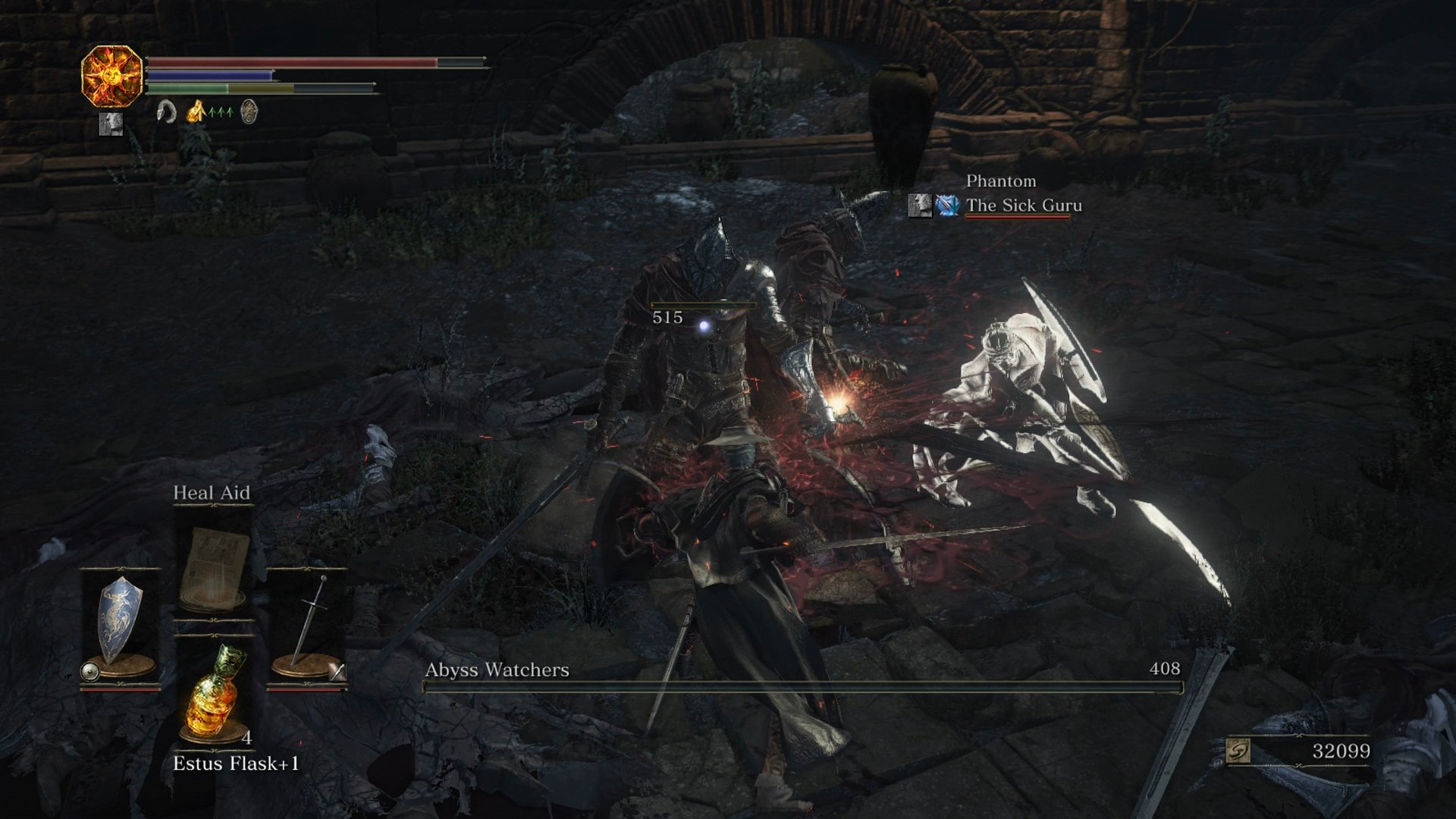
Visiting another player's game allows you to experience areas and practice against enemies and bosses with minimal risk – Phantoms don't drop Souls when killed. The phantom earns a reduced portion of the Souls from each kill. And if the team succeeds in defeating a boss, the visitor gets his or her Ember restored too.
Joining the game of a friend was always a difficult process in past Dark Souls games. From Software simply didn't want gamers playing with people they know. Thankfully the developer finally relaxed on that no-friends policy in Dark Souls III. You can now set a password for your game, and only the signs of people who know the password will show up.
If you struggle with Dark Souls III's difficulty, cooperative multiplayer is an excellent way to make things easier. Whenever you run into trouble, all you need to do is consume an Ember and then summon a friend or stranger for help. Many players prefer a more solitary Souls experience, but co-op is always there for those who want it.
Achievements
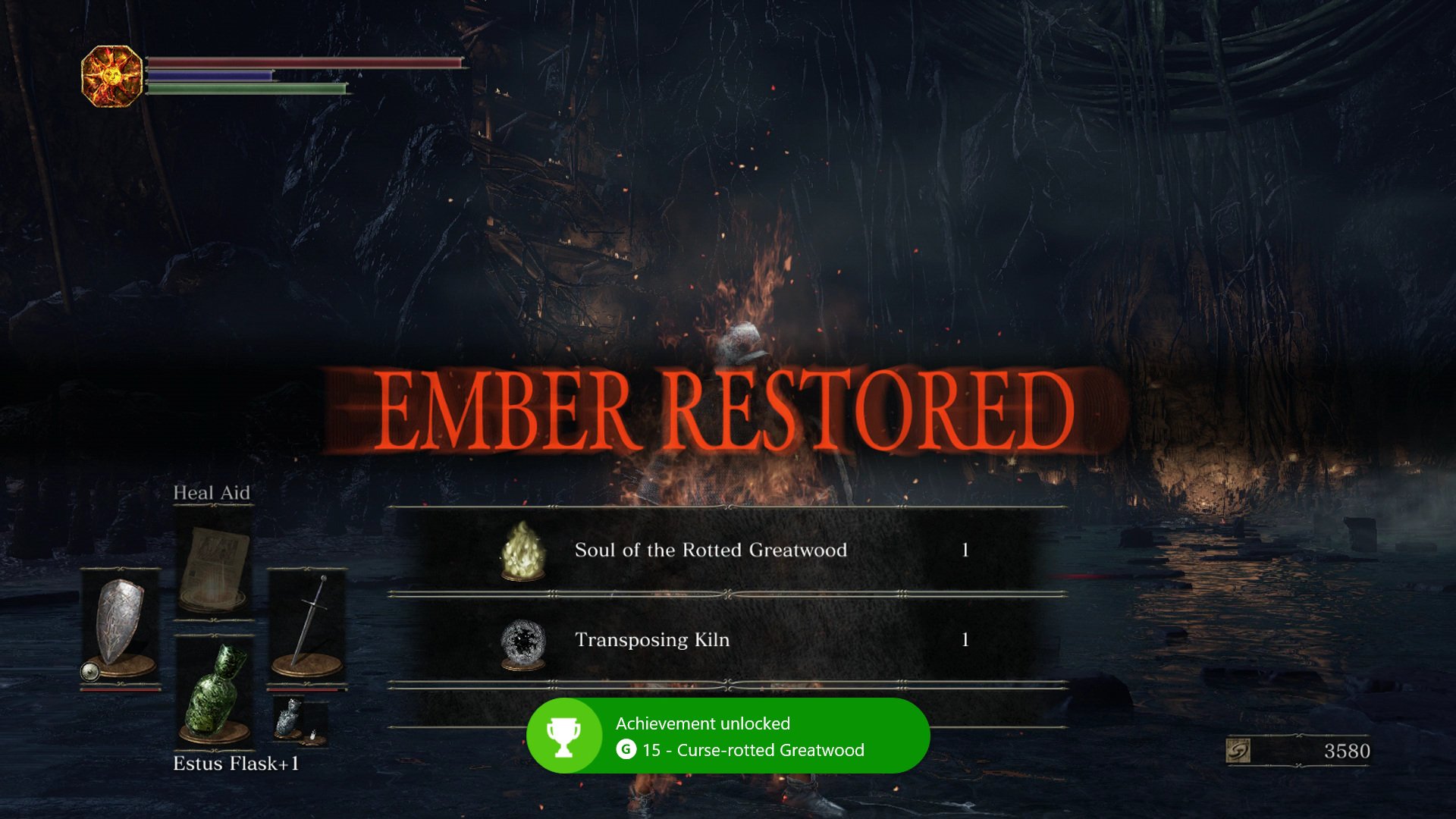
Dark Souls III offers 43 Achievements worth a total of 1,000 Gamerscore. Many involve defeating certain bosses, some of which are optional, as well as joining specific Covenants (allegiances that affect multiplayer matchmaking and rewards).
Some involve collecting all of the spells and rings in the game, the latter of which requires at least three very thorough playthroughs. There are also Achievements for three of the game's four endings, again requiring multiple playthroughs. Luckily Dark Souls III has "New Game+" modes that let you go through the game again with everything you picked up the first time.
The final Achievement is for completing all other Achievements. That's some serious dedication!
A world not to be missed
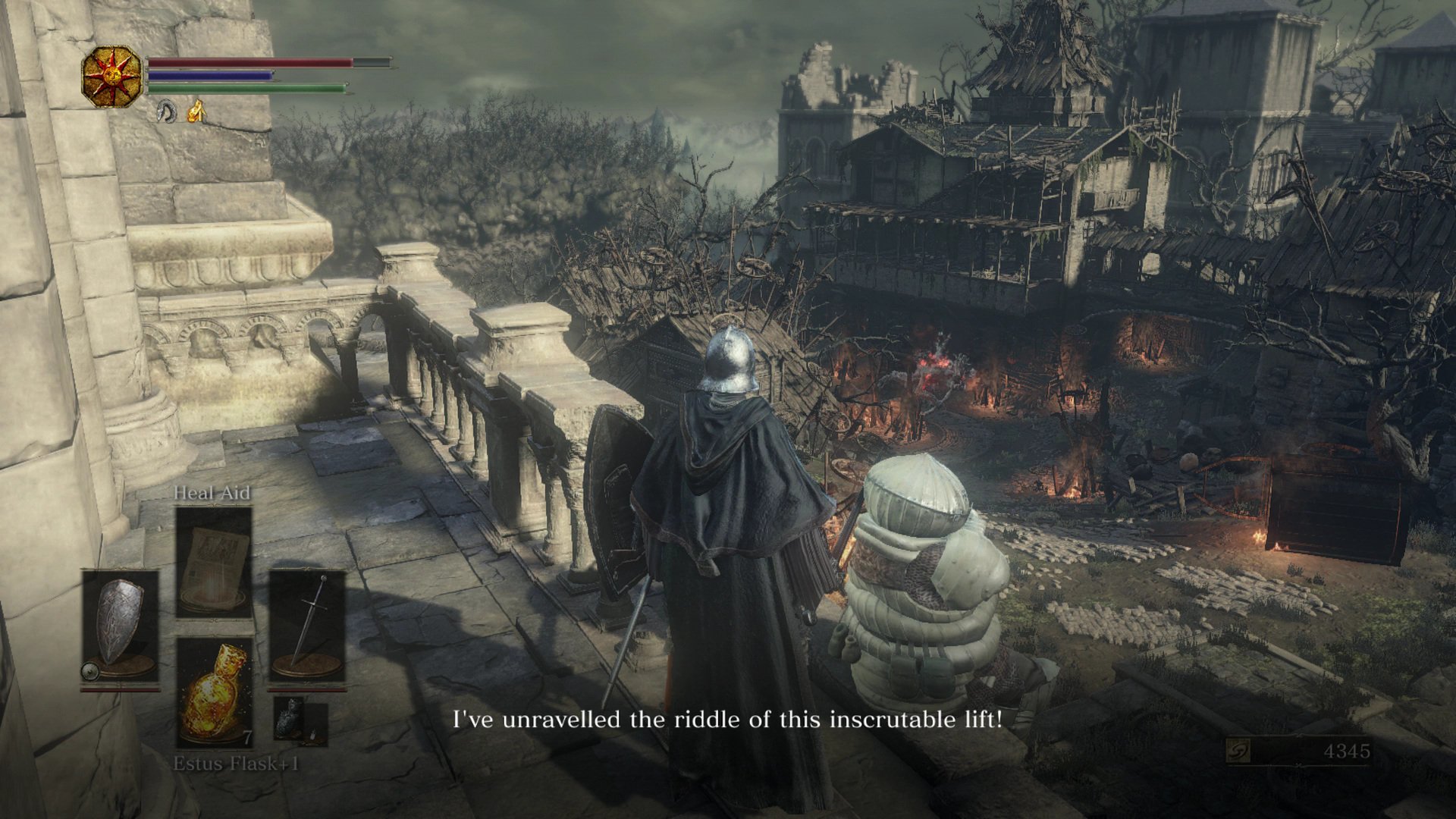
After leaving the Cemetery of Ash at the beginning of the game and defeating the first boss (which I covered in my initial impressions), players will reach the Firelink Shrine, a haven against the decay that threatens the entire world of Dark Souls. From there, you must use the Bonfire to travel to the next area, the High Wall of Lothric.
That's the only time you have to fast travel to reach a new destination. In every other aspect, the game world is a single, interconnected world. Each area leads to others, and many contain shortcuts that hide secrets and facilitate repeat visits.
At one point, the Ashen One will climb a tower inhabited by a giant wolf, ride a lift to the top, and do battle with a demon on the roof. From there, you can see nearly every other location in the game: the Undead Settlement, the Road of Sacrifices, the poisonous swamps of Farron Keep, and more. If you can see it, you can visit it at some point in your adventure.
The world of Dark Souls III is vast and connected. Although initially beautiful, things have since given way to a pestilent decay and ruin. Buildings crumble, plants and creatures fester with sores, and most of the original inhabitants have either died off or become monstrous shadows of their former selves. It is a world on the brink of death, reminiscent of Mid-World from Stephen King's Dark Tower novels.
Dark Souls III works so well both because of its unique and disturbing fantasy setting and the strength of its moment-to-moment gameplay. Even though I often died while exploring a new area and especially during boss battles, I never stopped loving it. The combat is just so good, every battle bristling with tension, danger, and excitement. Exploring the Kingdom of Lothric, seeking treasures, and solving its many mysteries proves just as rewarding.
One needs a certain disposition to appreciate Dark Souls III – a willingness to face setbacks and challenges and then overcome them. Don't expect to play this just like any other action-RPG. If you're going to play this game, it must be on its own terms and as it's meant to be played. That patience will be rewarded with a masterpiece, easily one of the best action and role-playing games of the year.
Pros:
- Deep combat system that rewards skill and practice
- Huge interconnected world filled with beauty and decay
- Memorable and challenging boss battles
- Multiplayer matchmaking significantly improved over previous entries
Cons:
- Clumsy menus. Why can't we equip items from the Inventory menu?
- Hit detection sometimes allows foes to strike through objects
- Supposedly Dark Souls III will be the final game in the series. On the plus side, From Software will release three expansions in 2016 and 2017.
- See Dark Souls III at Amazon
- See Dark Souls III at Microsoft Store
- See Dark Souls III on Xbox.com
- See Dark Souls III on Steam
Xbox One version provided for review by Bandai Namco.

Paul Acevedo was formerly a Games Editor at Windows Central. A lifelong gamer, he has written about videogames for over 15 years and reviewed over 350 games for our site. Follow him on Twitter @PaulRAcevedo. Don’t hate. Appreciate!
